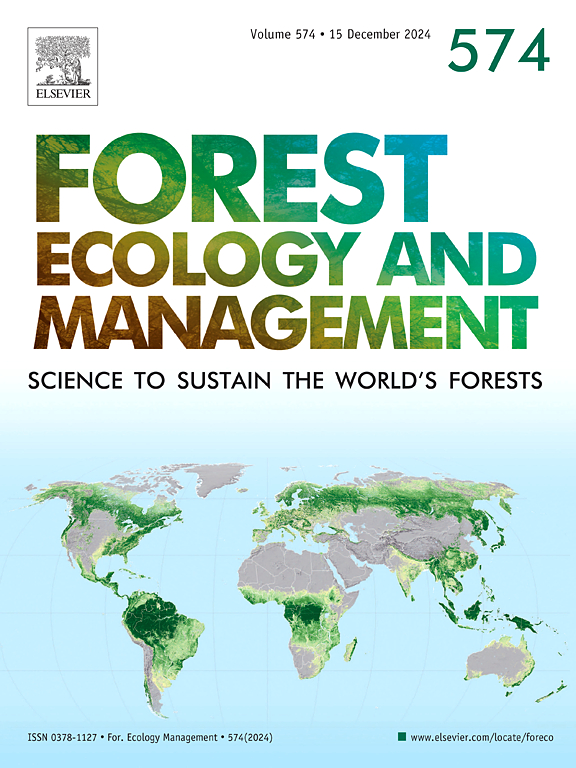Dissecting the roles of seed nutrient content and coat thickness in seed dispersal and fate mediated by rodents: A field experiment using artificial seeds
IF 3.7
2区 农林科学
Q1 FORESTRY
引用次数: 0
Abstract
Seed traits such as nutrient content and coat thickness significantly influence the foraging behavior of scatter-hoarding rodents and the fate of plant seeds. However, isolating the effects of these traits is challenging due to their covariance. This study aims to disentangle these effects using artificial seeds with varying levels of coat thickness and nutrient content to simulate natural seeds in a subtropical forest ecosystem in the Dujiangyan region, China. These seeds were deployed in the field to assess rodent foraging behavior, including harvest preferences, likelihood of consumption, probability of scatter-hoarding, and dispersal distance. We found seed coat thickness and nutrient content independently influenced rodent foraging behavior. Thicker seed coats reduced harvest preferences and consumption likelihood, but increased the dispersal distance; the probability of scatter-hoarding was the highest for seeds with a medium-thick seed coat. Higher nutrient contents increased both harvest preferences and scatter-hoarding probability but reduced consumption likelihood. When both traits were considered together, an optimal trait combination emerged: seeds with medium coat thickness and higher nutrient content had a higher probability of being scatter-hoarded and longer dispersal distances. Our findings highlight the significant impact of seed coat thickness and nutrient content on seed fates and dispersal distance through their influence on rodent foraging behavior. This study provides a novel insight into the complex interactions between plants and animals, as well as offers vital evidence for understanding seed ecology and plant population dynamics in forest ecosystems.
求助全文
约1分钟内获得全文
求助全文
来源期刊

Forest Ecology and Management
农林科学-林学
CiteScore
7.50
自引率
10.80%
发文量
665
审稿时长
39 days
期刊介绍:
Forest Ecology and Management publishes scientific articles linking forest ecology with forest management, focusing on the application of biological, ecological and social knowledge to the management and conservation of plantations and natural forests. The scope of the journal includes all forest ecosystems of the world.
A peer-review process ensures the quality and international interest of the manuscripts accepted for publication. The journal encourages communication between scientists in disparate fields who share a common interest in ecology and forest management, bridging the gap between research workers and forest managers.
We encourage submission of papers that will have the strongest interest and value to the Journal''s international readership. Some key features of papers with strong interest include:
1. Clear connections between the ecology and management of forests;
2. Novel ideas or approaches to important challenges in forest ecology and management;
3. Studies that address a population of interest beyond the scale of single research sites, Three key points in the design of forest experiments, Forest Ecology and Management 255 (2008) 2022-2023);
4. Review Articles on timely, important topics. Authors are welcome to contact one of the editors to discuss the suitability of a potential review manuscript.
The Journal encourages proposals for special issues examining important areas of forest ecology and management. Potential guest editors should contact any of the Editors to begin discussions about topics, potential papers, and other details.
 求助内容:
求助内容: 应助结果提醒方式:
应助结果提醒方式:


